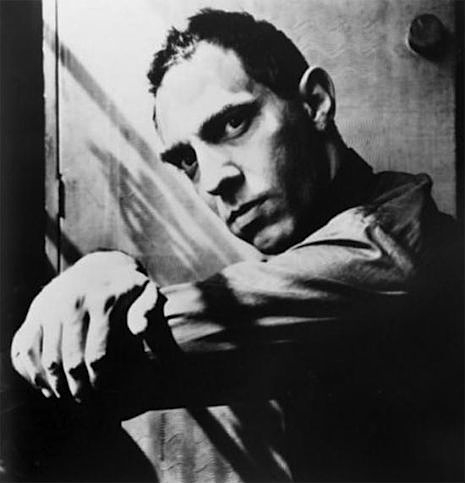
Derek Jarman was no slouch: he was a film-maker, writer, artist, set-designer, gardener, political campaigner and diarist. Jarman began his film career as a set designer working on Ken Russell’s The Devils and Savage Messiah. With the flamboyant Russell’s encouragement, Jarman picked up a Super 8 camera and started making his own personal short movies. These films enabled Jarman to “make rapprochement with [his] real world.”
“The world of painting was sterile empty… Although I didn’t believe it at the time because I didn’t have any confidence, I had been isolated by being gay in painting. Film restored that connection missing in my painting.”
Film also allowed Jarman to develop his “aesthetic explorations in a medium more amenable to [his] political concerns”. His early Super 8 films dealt with space, magic, light and sexuality.
Jarman’s 1976 film Sloane Square ironically subtitled “A Room of One’s Own” documented his eviction from a friend’s apartment, after the friend had died. Jarman lived a precarious existence during the early seventies, at times dependent on the kindness of his friends to keep a roof over his head. Jarman had been living in a vacant dockside warehouse, which had proved insufferable during the winter months. His friend and mentor, the writer Anthony Harwood, invited Jarman to live in his rent-controlled, two-bed apartment. Alas, Harwood was the kind of man who “sailed through life on unpaid bills,” as Jarman wrote in his memoir Dancing Ledge:
When [Harwood] received unpleasant-looking brown envelopes through the post he put them into the kitchen cupboard unopened. Every now and then he tripped up. This month [January 1976] has been overshadowed by the court case over a year’s unpaid rent at Sloane Square—which the landlords have refused to accept from me as they would be able to charge a fortune for this flat if they could get it back in their hands. It’s £15 a week and worth over a hundred.
With Harwood absent in New York, a notice of eviction was served, and Jarman attended court proceedings instigated by the landlords, where he offered to pay the outstanding back rent.
I put on my grey suit and sat through the afternoon in the magistrates’ court. Capital and County mounted a really mean attack through Bob the porter, accusing Anthony of everything in the book short of sodomy, but that was hinted at as well. I thought there was no chance but we won. The judge asked how many bedrooms there were—‘Two’—‘Well if that’s the case I see no reason for Mr. Jarman not to live there and take care of the place.’ The landlords brought up the lack of furniture, which Bob himself had helped to remove in the last onslaught when he let the bailiffs in. The judge smiled when I said Mr. Harwood, a writer, lived a Japanese lifestyle—‘It’s better with no shoes,’ he wrote, ‘no shoes at all.’
Not long after, Harwood died, and the landlords refused to recognize Jarman as tenant or accept his payment for rent arrears. At the age of thirty-four, and in the process of directing his first feature, Sebastiane, Jarman found himself homeless once again.
The apartment at Sloane Square was where Jarman cast for Sebastiane, where he spray-painted the walls, anticipating the set designs of his second feature Jubilee. It was also where he filmed and documented his life and friends, before the apartment was vandalized and abandoned.
Sloane Square was co-directed by Jarman and Guy Ford, and has been described as “the most Situationist of [Jarman’s] early films, in terms of both content and structure.” It’s a piece of personal, political and artistic filmmaking, which as the film switches from opening time-lapse to color film, Jarman presents himself as a filmmaker on the verge of his cinematic career, before returning to the apartment documenting the final leave-taking of a place (a past) he had once called home.
Jarman died of an AIDs-related illness in February 1994, days after his 52 birthday.